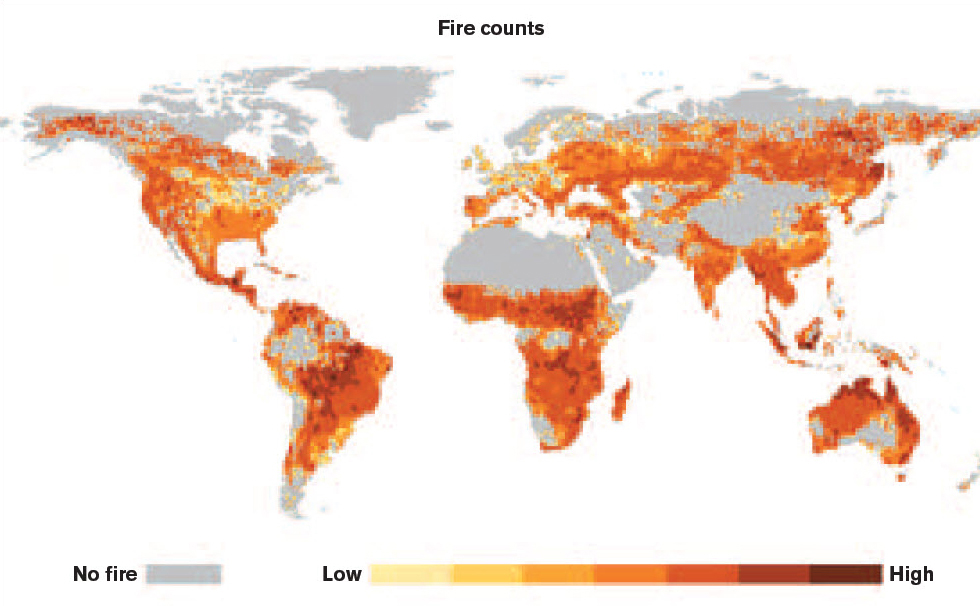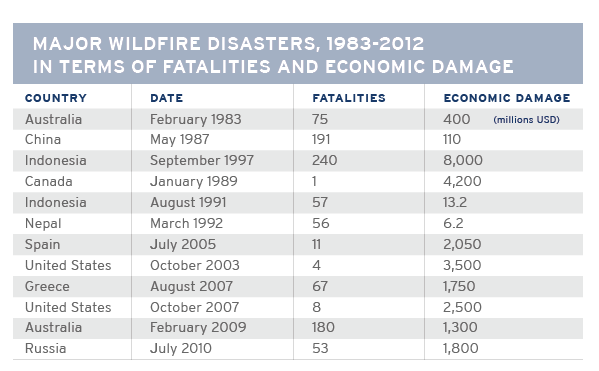Wildfires have been widespread in recent years, and are becoming a greater hazard, due to climate change and urban sprawl. Leading up to our event on April 22 (Earth Day), I’ll continue to share with you some additional interesting findings from
my annual disasters review with Daniel Petz and Chareen Stark
.
![]() Join the conversation on Twitter using #Disasters2012
Join the conversation on Twitter using #Disasters2012
.
Wildfires—defined by the International Disaster Database (EM-DAT) as “uncontrolled burning fires, usually in wild lands, which can cause damage to forestry, agriculture, infrastructure and buildings”—have been a widespread phenomenon in recent years. The map below shows the number of observed fire occurrence readings from combined remote sensing products from 1996 to 20071.

1 Data from MODIS (Moderate Resolution Imaging Radiospectrometer) and ATSR (Along Track Scanning Radiometer). From Max A. Moritz, M.A. Parisian, E. Batillori, M.A. Krawchuk, J. Van Dorn, D.J. Ganz and K. Hayhoe, Climate change and disruptions to global fire activity, Ecosphere, June 2012, Volume 3, no. 6, Art. 49, p. 11.,
www.esajournals.org/doi/pdf/10.1890/ES11-00345.1
While these fires have not resulted in a large number of fatalities, their economic impact has been significant:
In the future, wildfires will be of even greater concern, due to the growth of urban sprawl and the effects of climate change. As more people begin to live in residential areas that border undeveloped wildland vegetation, the risk of destroyed homes and fatalities from wildfires increases. And a hotter and drier climate in many parts of the world, fuelled by global warming, provides more favorable conditions for wildfires—which, in turn, leads to loss of forest and forest degradation that drives further climate change.



Commentary
The Hazard of Wildfires
April 19, 2013